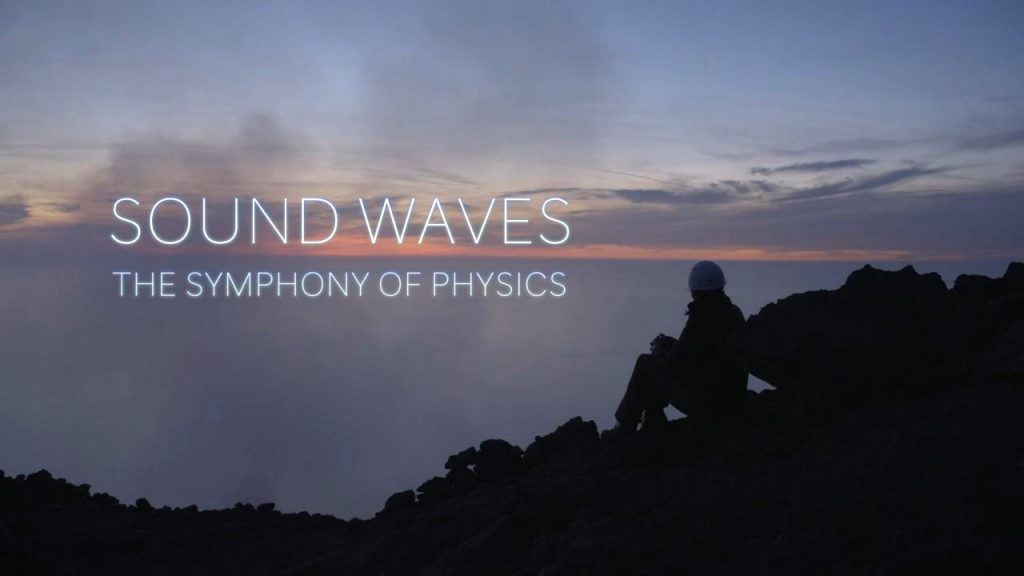Sound Waves – The Symphony of Physics – Making Sound episode 1: Dr Helen Czerski investigates the extraordinary science behind the sounds we’re familiar with and the sounds that we normally can’t hear.
She begins by exploring the simplest of ideas: what is a sound? At the Palace of Westminster, Helen teams up with scientists from the University of Leicester to carry out state-of-the-art measurements using lasers to reveal how the most famous bell in the world – Big Ben – vibrates to create pressure waves in the air at particular frequencies. This is how Big Ben produces its distinct sound. It’s the first time that these laser measurements have been done on Big Ben.
With soprano singer Lesley Garrett CBE, Helen explores the science of the singing voice – revealing in intimate detail its inner workings and how it produces sound. Lesley undergoes a laryngoscopy to show the vocal folds of her larynx. At University College London, Lesley sings I Dreamed a Dream inside an MRI scanner to reveal how her vocal tract acts as a ‘resonator’, amplifying and shaping the sound from her larynx.
Having explored the world of sounds with which we are familiar, Helen discovers the hidden world of sounds that lie beyond the range of human hearing. At the summit of Stromboli, one of Europe’s most active volcanoes, Helen and volcanologist Dr Jeffrey Johnson use a special microphone to record the extraordinary deep tone produced by the volcano as it explodes – a frequency far too low for the human ear to detect. Helen reveals how the volcano produces sound in a similar way to a musical instrument – with the volcano vent acting as a ‘sound resonator’.
Finally, at the University of Cambridge’s Institute of Astronomy, Helen meets a scientist who has discovered evidence of sound waves in space, created by a giant black hole. These sounds are one million billion times lower than the limit of human hearing and could be the key in figuring out how galaxy clusters, the largest structures in the universe, grow.
Sound Waves – The Symphony of Physics – Making Sound episode 1
In physics, sound is a vibration that propagates as an acoustic wave, through a transmission medium such as a gas, liquid or solid.
In human physiology and psychology, sound is the reception of such waves and their perception by the brain. Only acoustic waves that have frequencies lying between about 20 Hz and 20 kHz, the audio frequency range, elicit an auditory percept in humans. In air at atmospheric pressure, these represent sound waves with wavelengths of 17 meters (56 ft) to 1.7 centimetres (0.67 in). Sound waves above 20 kHz are known as ultrasound and are not audible to humans. Sound waves below 20 Hz are known as infrasound. Different animal species have varying hearing ranges.
Sound can propagate through a medium such as air, water and solids as longitudinal waves and also as a transverse wave in solids (see Longitudinal and transverse waves, below). The sound waves are generated by a sound source, such as the vibrating diaphragm of a stereo speaker. The sound source creates vibrations in the surrounding medium. As the source continues to vibrate the medium, the vibrations propagate away from the source at the speed of sound, thus forming the sound wave.
At a fixed distance from the source, the pressure, velocity, and displacement of the medium vary in time. At an instant in time, the pressure, velocity, and displacement vary in space. Note that the particles of the medium do not travel with the sound wave. This is intuitively obvious for a solid, and the same is true for liquids and gases (that is, the vibrations of particles in the gas or liquid transport the vibrations, while the average position of the particles over time does not change). During propagation, waves can be reflected, refracted, or attenuated by the medium.




